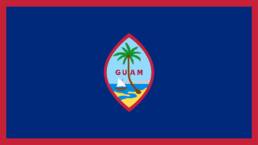The Guam-CNMI (Commonwealth of the Northern Mariana Islands) cap exemption is a specific provision under U.S. immigration law that affects H-1B and H-2B visas. Established by Public Law 110-229, known as the Consolidated Natural Resources Act of 2008, this exemption was created to play a crucial role in the economic and developmental strategies of Guam and the CNMI. Let’s delve into what this law entails and its implications for employers and foreign workers in these regions.
Overview of Public Law 110-229
Public Law 110-229, enacted on May 8, 2008, extends U.S. immigration law to the CNMI to help integrate the CNMI into the U.S. immigration system. This law also included provisions aimed at protecting the local labor market while allowing for the necessary growth and development of the economies in Guam and the CNMI.
Key Features of the Guam-CNMI Cap Exemption
The Guam-CNMI cap exemption offers significant relief from the annual numerical limits generally applied to H-1B and H-2B visas. Here’s how it works:
- H-1B Visa Exemption:
- Employers in Guam and the CNMI can hire H-1B workers without being subject to the national H-1B cap. This exemption is particularly beneficial for industries requiring professional specialty occupation workers, such as healthcare, engineering, and education.
- To qualify, the employment must be located in Guam or the CNMI, and the employer must file the petition with an indication that the work will be performed in these locations.
- H-2B Visa Exemption:
- Similarly, the H-2B visa petitions for temporary non-agricultural workers are exempt from the national H-2B cap if the employment is located in Guam or the CNMI.
- This exemption is crucial for sectors like construction, hospitality, and other service industries pivotal to the economic development of these territories.
- Duration and Conditions:
- Initially, the exemption was set to last until December 31, 2014, but subsequent extensions have been enacted, most recently extending the exemption until December 31, 2029. This extension reflects the ongoing developmental needs and unique economic conditions of Guam and the CNMI.
- Benefits for Local Economy:
- By removing the cap, these territories can address labor shortages more effectively, especially for large projects or industries experiencing rapid growth.
- It also aids in the development of infrastructure projects, tourism, and other key sectors by ensuring that there is a sufficient workforce.
Implications for Employers and Workers
For employers in Guam and the CNMI, the cap exemption allows for more flexibility in hiring foreign workers to meet labor demands without the constraints of the annual H-1B and H-2B caps. For foreign workers, it provides opportunities to work in the U.S. territories under conditions that might not be available on the mainland.
Conclusion
The Guam-CNMI cap exemption under Public Law 110-229 is a critical component of the immigration framework for these U.S. territories, supporting their economic development while balancing the protection of local labor markets. Employers looking to utilize this exemption should ensure compliance with all other applicable immigration rules and consult with immigration experts to navigate this specialized area effectively. This provision not only helps meet immediate labor needs but also plays a strategic role in the long-term growth and sustainability of Guam and the CNMI.
Ready to have Berardi on your side?
Whether you’re a business looking to hire or a professional hoping to relocate, immigration law can be complicated. But you don’t have to do it alone. Put our experience to work for you.



